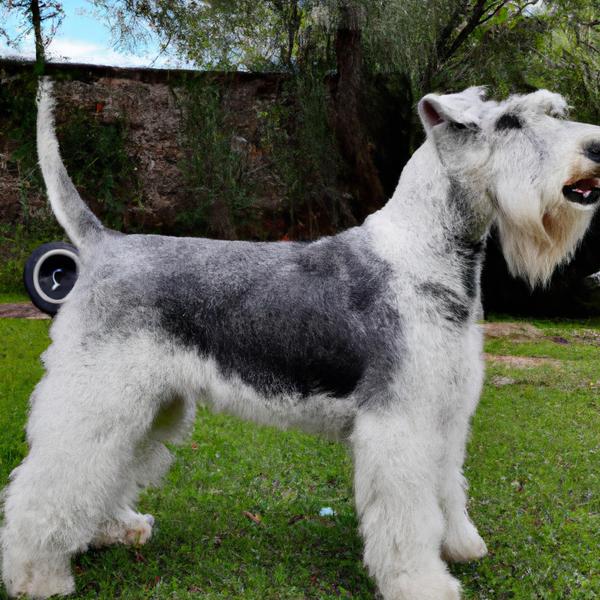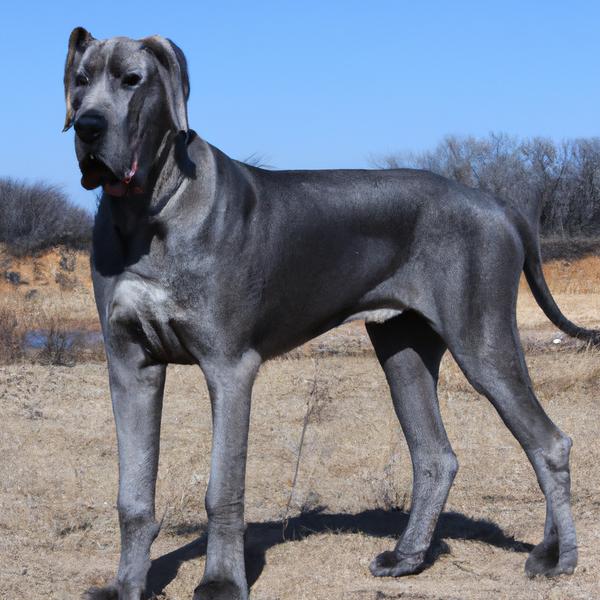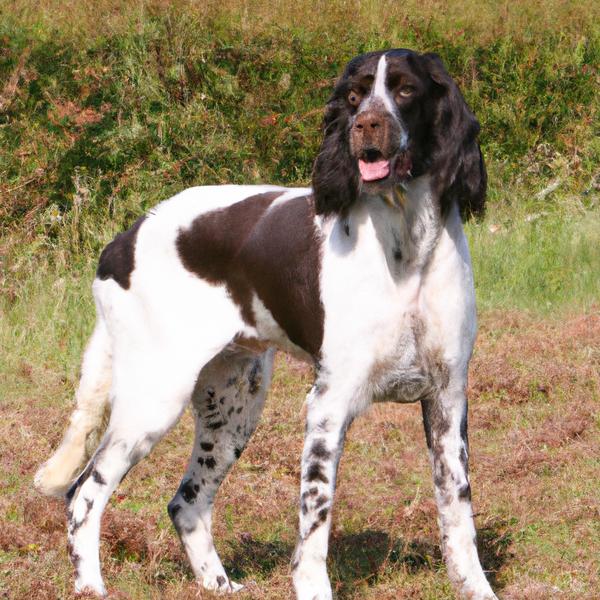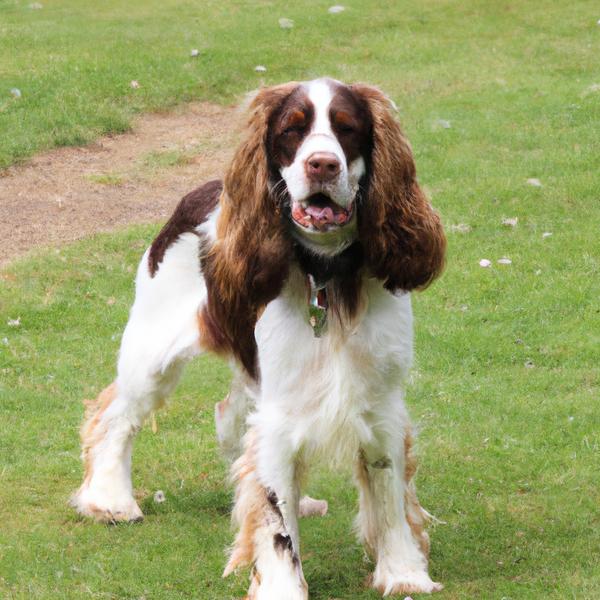Sussex Spaniel vs. Bloodhound: Breed Differences and Similarities
Weight Gain Potential
Which breed eats more: Sussex Spaniel or Bloodhound?
Sussex Spaniel tends to gain weight easily, needs increased exercise and playtime along with controlled food intake.
Bloodhound has average risk of obesity, needs daily walks and quality diet to maintain healthy weight.
Hypoallergenic
Are Sussex Spaniels or Bloodhounds hypoallergenic, or neither?
Unfortunately, neither Sussex Spaniel nor Bloodhound are hypoallergenic, which may not make them the best choice for dog lovers who suffer from pet allergies.
Temperament
What are the personalities of Sussex Spaniel and Bloodhound dogs?
Calm
Companionable
Friendly
Cheerful
Devoted
Sociable
Affectionate
Gentle
Independent
Outright
Tempered
Stubborn
Shedding Level
Do Sussex Spaniels shed more than Bloodhounds, or which breed sheds more, Sussex Spaniels or Bloodhounds?
Sussex Spaniel or Bloodhound dogs are not heavy shedders, but they will lose a significant amount of hair each year. To decrease the amount of shedding, you can regularly brush your Sussex Spaniel or Bloodhound. This will remove loose hair and keep their coat growing in the same direction.
Watchdog Ability
Which dog breed makes a better watchdog, the Sussex Spaniel or Bloodhound?
Sussex Spaniels are decent watchdogs - they'll alert their owner if something seems amiss.
Avoid Bloodhounds as watchdogs - they're not effective.
Origin
What is the origin of Sussex Spaniel and Bloodhound dog breeds?
England
Europe
Ancestry
What are the origins of Sussex Spaniel and Bloodhound breeds?
field spaniel
flemish hound, talbot hound
Date of Birth
When were Sussex Spaniel and Bloodhound breeds first developed?
1800s
middle ages
Breed Group
What is the Breed Group of Sussex Spaniel and Bloodhound?
Sporting (AKC:1884)
Gun Dogs (UKC)
Hound (AKC:1885)
Scenthounds (UKC)
Eye Color Possibilites
What are the eye colors of Sussex Spaniel and Bloodhound dogs?
Hazel
Hazel
Amber
Nose Color Possibilites
What are the natural nose colors of Sussex Spaniel and Bloodhound?
Brown
Black
Brown
Coat Color Possibilites
What are the natural colors of the coat for Sussex Spaniel and Bloodhound breeds?
Brown
Black
Brown
Red
Fawn
Sable
Coat Length
What is the typical coat length for Sussex Spaniel and Bloodhound breeds?
Sussex Spaniels have medium-length coats.
Bloodhounds have short coats.
Coat Density
What is the density of the coat of Sussex Spaniel and Bloodhound?
Coat Texture
What is the hair texture of Sussex Spaniel and Bloodhound?
Wavy
Straight
Litter Size
What is the usual litter size for Sussex Spaniel and Bloodhound?
A Sussex Spaniel can have a litter of 12-15 puppies on average. However, it's worth noting that the size of the litters can vary greatly. Factors that can influence litter size include the health of the mother, breeding history, and genetics.
A Bloodhound can have a litter of 10-12 puppies on average. However, it's worth noting that the size of the litters can vary greatly. Factors that can influence litter size include the health of the mother, breeding history, and genetics.
Adaptability
Sussex Spaniels are highly adaptable and versatile, making them excellent companions for families and individuals of all lifestyles.
Bloodhounds have average adaptability to changes in lifestyle and living environments compared to other breeds.
Health Issues
Between Sussex Spaniel and Bloodhound, which breed is more prone to health problems?
While the Sussex Spaniel breed is generally healthy, occasional vet check-ups are still necessary to address any health concerns.
The Bloodhound breed is generally very healthy, requiring minimal vet visits. Still, it's important to keep an eye on their health and seek veterinary care when needed.
Major Concerns
What are the major health concerns for Sussex Spaniel and Bloodhound breeds?
Usually A Very Healthy Breed
Otitis Externa
Entropion
Gastric Torsion
Cherry Eye
Hip And Elbow Dysplasia
Minor Concerns
What minor health issues should be kept in mind when owning Sussex Spaniel and Bloodhound?
Intervertebral Disc Disease
Hip Dysplasia
Bone And Joint Problems
Hypothyroidism
Occasional Tests
What occasional tests are recommended for Sussex Spaniel and Bloodhound breeds?
Hip
Skeletal
X-Rays
Eye
Hip
Elbow
Thyroid Tests
X-Rays
Energy
How do the energy levels of Sussex Spaniels and Bloodhounds compare?
Sussex Spaniels are a good choice for a low-key lifestyle due to their low energy levels.
Bloodhounds thrive on an active lifestyle due to their high-energy nature.
Social Needs
Sussex Spaniel vs Bloodhound social needs comparison
Sussex Spaniel has average social needs and is less independent than other breeds.
Bloodhound has very high social needs and requires regular mental and physical stimulation, a job or purpose, and companionship.
Exercise Needed
Sussex Spaniel vs Bloodhound exercise need comparison.
Sussex Spaniels require significant physical activity and suit those with an active lifestyle.
Bloodhounds need high physical activity and are ideal for active individuals, but not suitable for sedentary lifestyles or small apartments.
Sleeping Need
Which of the two sleeps the most/least: Sussex Spaniel or Bloodhound?
Sussex Spaniels are known for their relaxed and calm nature and enjoy long periods of sleep.
Bloodhounds are active and require sufficient sleep to stay healthy.
Drooling Tendency
Which drools more/less, Sussex Spaniel or Bloodhound?
Sussex Spaniel minimally drools, ideal for those who dislike drool marks on clothing.
Bloodhound excessively drools, consider a different breed if not appealing.
Tendency to Bark
Do Sussex Spaniels or Bloodhounds bark more/less frequently?
Sussex Spaniel and Bloodhound dogs bark and howl frequently, they are not a good fit for quiet homes.
Territorial
Is the Sussex Spaniel or Bloodhound a better guard dog?
While Sussex Spaniel dogs can defend their territory or owners, it's not their primary trait, and they are not ideal guard dogs.
Bloodhound dogs are not typically good guard dogs due to their lack of protective nature and weak territorial drive.
Mouthiness
Mouthiness Comparison: Sussex Spaniel vs Bloodhound?
Roaming urge
Sussex Spaniel vs Labrador: Running away tendency?
Prey Drive
Sussex Spaniel or Bloodhound - which breed has a higher level of prey drive?
Activity Level
Which breed has higher energy, Sussex Spaniels or Bloodhounds?
Both Sussex Spaniel and Bloodhound are medium-energy dogs that enjoy socializing and playing with other dogs. They may engage in casual or sustained games of chase, and occasionally have bursts of barking or racing around the house.
Tolerance of being left alone
Walks per Week
How many miles should Sussex Spaniel or Bloodhound walk each week?
Sussex Spaniel and Bloodhound generally need a minimum of 8 miles of walking per week, but it can be increased as long as they are comfortable with it.
Activity per Day
Do Sussex Spaniels or Bloodhounds require more exercise?
Both Sussex Spaniel and Bloodhound typically require a minimum of 60 minutes of exercise each day. The exercise can be spread throughout the day and may involve high-energy activities like walking, running, and playing.
Grooming
Which breed is easier to maintain in terms of grooming, Sussex Spaniels or Bloodhounds?
The Sussex Spaniel requires an average amount of grooming compared to other breeds.
The Bloodhound has low grooming needs and is easy to maintain.
Brushing Frequency
What is the recommended brushing frequency for Sussex Spaniel and Bloodhound dogs?
Ideally, Sussex Spaniel should be brushed at least 2 or 3 times a week (preferably daily) improve shedding.
Bloodhound should be brushed at least once a week. Of course you can give them more frequent brushes if you find that they are still shedding a lot
Brushing Tools
What brushing tools are used for Sussex Spaniels and Bloodhounds?
Pin Brush
Comb
Deshedder
Nail Clipper
Slicker Brush
Nail Clipper
Cups
How much food should be given to Sussex Spaniel or Bloodhound in cups?
For an average 35-45 pound (16 - 20 kg) Sussex Spaniel feed 2 cups daily. But, keep in mind, the amount you feed is going to be dependent on the quality of the food you are feeding.
For an average 90-110 pound (41 - 50 kg) Bloodhound feed 3 cups daily. But, keep in mind, the amount you feed is going to be dependent on the quality of the food you are feeding.
Daily Cost
Which breed has a higher daily cost, Sussex Spaniel or Bloodhound?
The average cost of a Sussex Spaniel is somewhere $2.50 - $2.80 per day.
The average cost of a Bloodhound is somewhere $2.80 - $3.20 per day.
Monthly Cost
Which breed has a higher monthly cost, Sussex Spaniel or Bloodhound?
The average per month expenses of a Sussex Spaniel is between $74 - $84. This makes an average of $888 - $1008 per year. It will be on the higher side when the dog is still small because it will need more frequent visits to the vet, shots.
The average per month expenses of a Bloodhound is between $84 - $95. This makes an average of $1008 - $1140 per year. It will be on the higher side when the dog is still small because it will need more frequent visits to the vet, shots.
Intelligence
Comparing Intelligence: Sussex Spaniels vs Bloodhounds
Sussex Spaniel has below average obedience intelligence, but they excel in understanding human emotions.
Bloodhound is a very intelligent and trainable breed.
Sensitivity Level
How do Sussex Spaniel and Bloodhound compare in sensitivity?
This breed is sensitive to its environment and best suited for patient and understanding families with a consistent routine.
This breed is sensitive and requires gentle handling and a calm home environment.
Affection Dependance
Which is the more affectionate dog breed: Sussex Spaniel vs Bloodhound?
Apartment Friendly
Which breed is more apartment-friendly: Sussex Spaniel or Bloodhound?
Sussex Spaniels are good apartment dogs as long as they get enough exercise and stimulation outside of the apartment.
The Bloodhound is not suitable for apartments and requires a large yard to thrive. Pent-up energy in small spaces can lead to destructive behavior.
Child Friendly
Do Sussex Spaniels or Bloodhounds have a friendlier temperament towards children?
The typical characteristics of Sussex Spaniel and Bloodhound indicate that this breed of dog is an ideal companion for kids and makes them family pets. Their gentle and protective nature and calm mentality make them gel along quickly with the younger humans.
Senior-friendly
Which dog is more suitable as a pet for the elderly - Sussex Spaniel or Bloodhound?
Cat Friendly
Do Sussex Spaniel or Bloodhound breeds have a better compatibility with cats?
Sussex Spaniels are average in their friendliness toward cats and tend to do well with them, especially if raised together.
Bloodhounds are very friendly with cats and make great companions for them.
Dog Friendly
Which breed is more sociable with other dogs: Sussex Spaniel or Bloodhound?
Sussex Spaniels and Bloodhounds are very friendly towards other dogs. This breed typically have a happy and affectionate temperament around dogs.
Pet friendly
How do Sussex Spaniel or Bloodhound dogs interact with other pets?
Stranger Friendly
Which breed is more friendly with strangers: Sussex Spaniel or Bloodhound?
Sussex Spaniels are averagely friendly around strangers but benefit from early socialisation.
Bloodhounds are highly friendly around strangers.
Playfulness
Which breed is more playful between Sussex Spaniel and Bloodhound?
Sussex Spaniels have an average level of playfulness, enjoying playtime like most dogs but not excessively so.
Bloodhounds are very playful, so adopting an older one might be a better option for a more relaxed experience.
Trainability
How do the trainability levels of Sussex Spaniels and Bloodhounds compare?
Sussex Spaniels are usually easy to train but require consistency to fully obey commands.
Bloodhounds are popular for their ease of training and quick learning ability.
Compare Sussex Spaniel with other breeds

Papitese
Sussex Spaniel vs Papitese

Lab Pei
Sussex Spaniel vs Lab Pei

Sealydale Terrier
Sussex Spaniel vs Sealydale Terrier

Mini Yorkshire Aussie
Sussex Spaniel vs Mini Yorkshire Aussie

Basston
Sussex Spaniel vs Basston

Dane Shepherd
Sussex Spaniel vs Dane Shepherd

Posavac Hound
Sussex Spaniel vs Posavac Hound

Lhasa Apso
Sussex Spaniel vs Lhasa Apso

Welsh Terrier
Sussex Spaniel vs Welsh Terrier

English Sprointer
Sussex Spaniel vs English Sprointer

Bull Mastweiler
Sussex Spaniel vs Bull Mastweiler

Doxie Scot
Sussex Spaniel vs Doxie Scot

